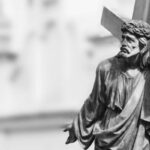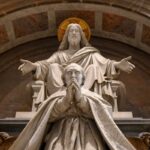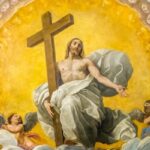We explain what Protestantism is, its characteristics and main branches. Also, its origin and how it differs from Catholicism.
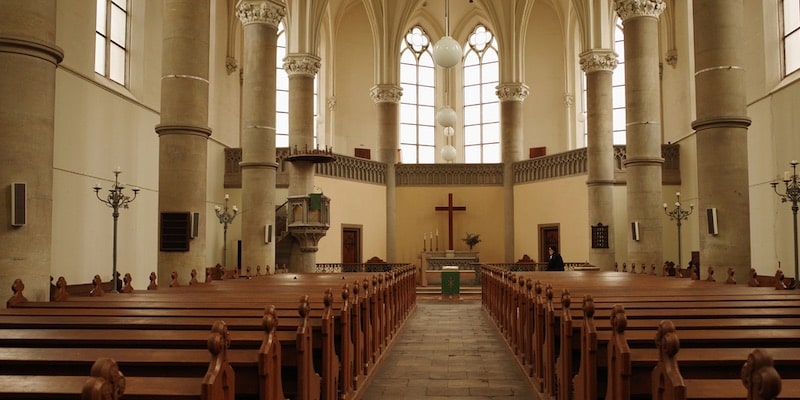
What is Protestantism?
Protestantism It is one of the three great branches of the religion Christian, along with the Catholicism and the orthodoxy. It is a current that covers around 32% of the Christian faithful (about 800 million faithful), and brings together under the same name a very diverse set of churches and Christian movements, without there being a supreme authority or a single entity among them. structural unit.
The doctrines that make up Protestantism have in common with Catholicism and Orthodoxy the faith in Jesus of Nazareth as the Messiah announced in the Old Testament, devotion to the Bible and identification with the cross. However, they present a notable set of differences, such as the rejection of Catholic saints, the celibacy of the priesthood and the religious authority of the Pope, who presides over the Catholic Church from Vatican City.
Protestantism It emerged with the Protestant Reformation, led by Friar Martin Luther (1483-1546) in 1517. Despite their great diversity, the churches and movements that make up Protestantism can be grouped into three categories:
- Historic churches of national character. Emerging in specific countries during the time of the Protestant Reformation, they have a strong identification with their nations of origin, such as the Church of England (or Anglican) and the Lutheran Church of Germany.
- Historic congregational churches. Known as the Second Reformation churches, they emerged mainly in the 16th century. This is the case of Puritan churches (of Calvinist tradition), Anabaptist groups (such as Mennonites) and most evangelical churches.
- Pentecostal and charismatic movements. Most of them are recently created, either derived from historical churches or without continuity with any of them. These are movements that promote the doctrine of the “baptism of the Holy Spirit.”
Although they do not share religious authorities, these churches and movements are organized around three international institutions: the World Council of Churches, the World Communion of Reformed Churches and the World Evangelical Alliance. Each church has its own temples and its own titles for the priesthood. The country with the largest number of Protestant faithful in the world is the United States.
Key points
- Protestantism is one of the three major branches of Christianity, along with Catholicism and Orthodoxy, and brings together some 800 million faithful around the world.
- It shares with the other branches of Christianity the faith in Jesus Christ as the Son of God and the authority of the Bible, but rejects Catholic saints, priestly celibacy and the authority of the pope.
- It emerged in the 16th century from the Protestant Reformation led by Martin Luther in Germany.
- It does not have a unified church, like Catholicism, but several churches, movements and denominations, such as Lutheranism, Calvinism, Anglicanism, Baptistism, Methodism, Evangelicalism, Pentecostalism and Adventism.
- The five fundamental principles of Protestantism are: by Scripture alone (primacy of the Bible), by faith alone (justification by faith and not by works), by grace alone (salvation granted by the grace of God), by Christ (Jesus is the only mediator with God) and glory to God alone (devotion dedicated only to God).
See also: Religious norms
Origin of Protestantism

The origins of Protestantism as a religious movement date back to the 16th century, when the Protestant Reformation took place, a set of criticisms and questions of Catholic dogmas and the authority of the Pope. The Reformation had the purpose of reforming the Christian religion to return to a purer or original practice that is, similar to that practiced by the first Christians of Antiquity.
It was a consequence of the crisis of religious confidence that was unleashed on the Catholic Church in Western Europe, when numerous accusations of corruption arose against the ecclesiastical authorities especially for the sale of bulls of indulgence with which various activities of the Church were financed, including the construction of St. Peter's Basilica in Rome.
This was interpreted by some religious as an outrageous sign of mercantilism on the part of the Church, and motivated the Augustinian friar and theology professor Martin Luther (1483-1546) to write his Questioning the power and effectiveness of indulgences (better known as “the ninety-five theses”). There he accused the Church of promoting false repentance among the faithful and of betraying fundamental Christian principles.
According to tradition, Luther nailed his writing to the door of the Palace Church in Wittenberg, Germany, in October 1517 and with it he summoned the faithful to openly debate the indulgences of 1516 and 1517, which had already been the subject of criticism in his sermons. Initially, the papacy did not pay much attention to Luther, but when his texts, originally written in Latin, were translated into German and distributed throughout Germany and other parts of Europe, it became evident that he had started a larger movement and decided to accuse him of heresy. Luther denied papal authority and was excommunicated in 1521.
However, the Catholic Church was unable to stop the schism that had begun to occur in Western Christendom. The German princes, who had ambitions for autonomy from the papacy and the Holy Roman Emperor, saw the opportunity to break with papal authority and found their own Christian churches. Thus began the Reformation, and although the emperor initially repressed the reform attempts of the nobles, the reformist impetus continued and led to a series of conflicts and religious wars that shook the European continent during the following century.
Europe was broadly divided into two Christian blocks: to the north, the Protestant countries, with their respective churches, and to the south, the Catholic countries, loyal to the papacy and the so-called Counter-Reformation (beginning with the Council of Trent inaugurated in 1545).
Origin of the term “Protestant”
The term “Protestant” came from the so-called Espira protest a public document formulated at the diet (assembly) of Speyer in 1529. In it, six princes and representatives of fourteen cities of the Holy Roman Empire protested against the decision of Emperor Charles V to annul the religious tolerance that had been granted to the German principalities in 1526. The objective of Charles V was to combat the Reformation.
This protest proclaimed that secular authority could not impose itself in matters of faith, and although the emperor refused to receive the document, it was reproduced and distributed throughout the empire. The religious division initiated within the Holy Roman Empire led to the Thirty Years' War (1618-1648) a conflict that involved most European countries.
Characteristics of Protestantism
The main characteristics of Protestantism are:
- It is a branch of Christianity distinct from Catholicism and Orthodoxy. However, it is not a unified movement, but rather a set of autonomous and independent churches and movements.
- It has no central religious authority not a single doctrinal body, but all Protestant churches preach the teachings of Jesus of Nazareth, considered the Messiah and the Son of God, as well as the precepts of the Old Testament (a selection of 39 books different from the Catholic selection of 46) and of the New Testament. This means that its sacred book is the Bible and its fundamental symbol is the cross.
- It emerged in the 16th century as an alternative to Catholic Christianity since he aspired to recover the purity of original Christianity (which he considered corrupted by the Catholic Church). However, each Protestant church and movement has its own way of interpreting the Scriptures and practicing the liturgy.
- Their priests may be called “pastors,” “ministers,” “elders,” “bishops.” or in other ways, depending on the church and its organization. Celibacy is not usually a requirement for them, and in some cases the priesthood can be exercised by women.
Fundamental principles of Protestantism
Although they do not have a unified doctrinal body, Protestant churches and movements share a minimum body of five “solas” or fundamental principles, which are:
- Only by Scripture (sola Scriptura). It states that there is only one truth expressed in the word of God, contained in the Bible. This means that the highest authority on the path of faith is the Bible, above any tradition or ecclesiastical catechism. This does not prevent interpretations in contemporary terms, but in some currents the principle of sola Scriptura It is interpreted as a rejection of everything that does not appear in the biblical text.
- By faith alone (sola fide). It states that there is only one possible way for human salvation, which is justification by faith. This means that only through faith in Jesus Christ, and not through works (such as charity or penance), will God's forgiveness be achieved.
- Just for grace (only gratia). It states that salvation is granted to human beings by the grace of God, and not by the merits of people. This leads to different positions regarding individual freedom: some more radical ones propose its non-existence when receiving divine grace and other more conciliatory ones maintain its necessity to accept it.
- Christ alone (Solus Christus). It states that there is only one mediator between humanity and God: Jesus Christ. Although this is to a certain extent shared by all Christianity, Protestants deny the possibility of intercession of saints and the Virgin Mary, which is why they do not admit their veneration through images and relics, something that Catholicism and Orthodoxy do promote.
- Glory to God alone (soli Deo gloria). It states that only God is worthy of glory and devotion, since he is the creator of everything that exists and salvation is due to him. Therefore, the life of the believer must be lived for the glory of God.
Main branches of Protestantism
Protestantism brings together a diverse set of churches, movements or denominations, each in charge of an independent cult, despite the fact that their doctrines present numerous similarities. These branches emerged starting in the 16th century, either in the context of the Protestant Reformation or as new forms of Protestantism that sought a kind of reform within the Reformation (generally known as the “Radical Reformation”).
Thus, the main branches of Protestantism currently include:
- Lutheranism. Emerging in the 16th century from the proposals of Martin Luther, it is the most popular Protestant movement in Germany and Scandinavia, and has more than 75 million followers around the world. Most of its churches are united in the Lutheran World Federation. Celebrates baptism and the Eucharist, recognizes the supreme authority of the Bible (sola Scriptura), defends justification by faith (sola fide) and admits the universal priesthood (all the faithful can officiate the rites, since every believer can turn to God without intermediation).
- Anglicanism. Emerging in the 16th century from the break between King Henry VIII of England and the Pope, it became the official doctrine of the Church of England and currently unites several churches in the Anglican Communion, under the moral leadership of the Archbishop of Canterbury. It is a “middle way” between Catholicism and Protestantism, celebrates baptism and the Eucharist, and has around 85 million faithful around the world, a large part of them in England.
- Calvinism. Emerging in Switzerland in the 16th century after the break of the French theologian John Calvin with Catholicism, it later spread to other countries, such as Scotland, France, the Netherlands, England and the colonies of North America. One of its fundamental doctrines is predestination, which holds that people are predestined by God to salvation or damnation. It currently brings together Reformed, Presbyterian and Congregational churches, which total around 60 million faithful.
- baptism. Emerging in England at the beginning of the 17th century as a branch of Puritanism, it has links with Calvinism and, in particular, with Congregationalism. It is the majority Christian denomination in the United States, and around the world it has about 70 million followers. It celebrates the Eucharist and baptism, the latter of special significance, as it should only be administered to true believers (that is, to adults) and through complete immersion in water.
- Methodism. Emerging in the 18th century in England, from the work of the English theologian John Wesley, it is a movement related to Calvinism and Anglicanism that emphasizes conversion, preaching, holiness and spiritual perfection. It celebrates the Eucharist and baptism, stands out for the singing of hymns and has 27 million faithful (80 million if you count the unified churches with Methodist participation, which are born from the union of different denominations), especially in the United States, the United Kingdom and sub-Saharan Africa.
- evangelism. Emerging from various theological trends, such as Methodism, Pietism and the Moravian Church, it is currently one of the most popular Protestant movements on the planet, with around 600 million faithful, concentrated mostly in the United States, Latin America (especially in Brazil), sub-Saharan Africa and South Korea. Many evangelists belong to various branches of Protestantism. It celebrates believers' baptism (through immersion) and the Eucharist, and promotes in its faithful the idea that incorporation into worship is a form of spiritual rebirth.
- Pentecostalism. Emerging at the end of the 19th century and the beginning of the 20th, it is a young variant of Protestantism, inspired by the preachings of Charles Fox Parham and William Seymour. It encompasses small local congregations and large associations, such as the Assemblies of God and the Church of God in Christ. Celebrates the Eucharist or Holy Supper and baptism, with emphasis on the so-called “baptism of the Holy Spirit” (a religious experience that all believers must seek and that is believed to be accompanied by glossolalia or the gift of tongues, a state of trance which allows you to speak in different languages after receiving the Holy Spirit). It has about 250 million followers, especially in the United States, Latin America, sub-Saharan Africa and East Asia.
- Adventism. Emerging in the mid-19th century from the preaching of the American lay Baptist farmer William Miller, it celebrates baptism and the Lord's Supper (equivalent to the Eucharist of other denominations). He dedicates Saturday to God (not Sunday, as is customary in most Christian churches) and believes that the second coming of Christ is imminent and that in paradise there is a heavenly sanctuary reserved for the faithful. It has around 22 million followers around the world.
Differences between Catholics and Protestants
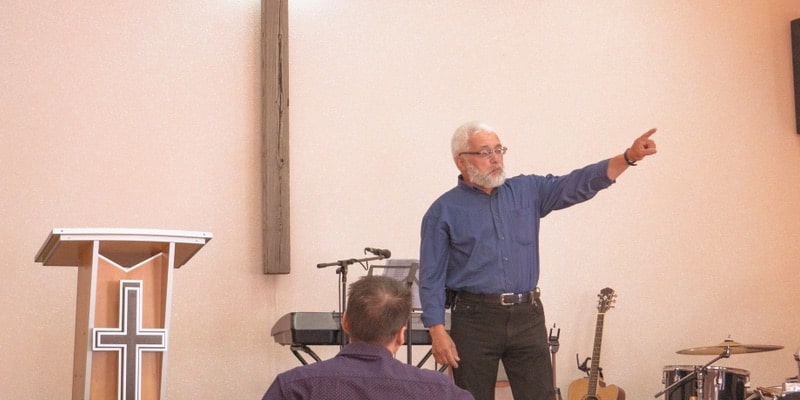
Both Catholics and Protestants belong to Christianity, as they consider themselves followers of Jesus Christ. However, important differences stand out between them, such as the following:
| Catholicism | Protestantism |
|---|---|
| The axis of its doctrine is the belief in Jesus of Nazareth as the Messiah and Son of God. In addition, the Virgin Mary and the saints are worshiped, who are seen as intercessors before God on behalf of the faithful. | The basis of their faith is the belief in Jesus of Nazareth as the Messiah, Son of God and only mediator between the faithful and God. He rejects the Catholic veneration of saints and relics, considering it a form of idolatry. |
| Their churches often have majestic altars and elaborate decorations including images of saints and Jesus on the cross. | Their altars are usually simpler than Catholic ones and do not include images of saints. In many temples only the cross is reproduced without the figure of Jesus crucified. |
| The Bible, made up of the Old Testament (46 books) and the New Testament (27 books), is considered a sacred text, and the tradition and teachings of theologians and mystics also have religious authority. | The Bible, composed of the Old Testament (39 books) and the New Testament (27 books), is its only sacred text. Mystical books and various interpretations of the Bible are often distrusted. |
| Seven sacraments are recognized: baptism, confirmation, eucharist (or communion), penance (or confession), anointing of the sick (or extreme unction), priestly orders and marriage. | In general, it recognizes two sacraments: baptism and the Eucharist (also known as the Holy Supper or the Lord's Supper). In some denominations, adult baptism by full immersion (called believer's baptism) is practiced. |
| The Church is conceived as universal, with the pope, successor of Saint Peter, as its spiritual leader. | Each church or movement considers itself the true practice of the Gospel and has no unifying spiritual leader. |
| The Church is a hierarchical and formal organization that requires celibacy and complete dedication of its priests. | Any of the faithful can officiate the rites, although an ordination process is usually necessary, and pastors or ministers are allowed to marry. |
References
- Chadwick, H., & Evans, G.R. (1994). Christianity. Twenty centuries of history. Folio.
- Filoramo, G., Massenzio, M., Raveri, M., & Scarpi, P. (2000). History of religions. Criticism.
- Marty, M.E. et al. (2024). Protestantism. Encyclopedia Britannica. https://www.britannica.com/
- The Editors of Encyclopaedia Britannica (2024). Reformation. Encyclopedia Britannica. https://www.britannica.com/
- Wainwright, G. et al. (2024). Christianity. Encyclopedia Britannica. https://www.britannica.com/

